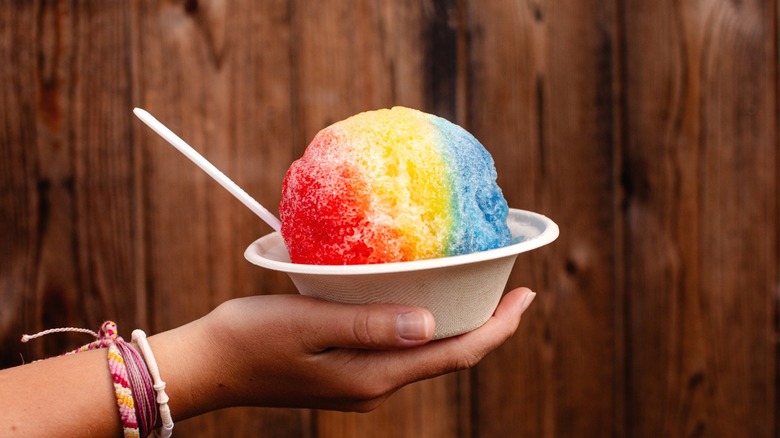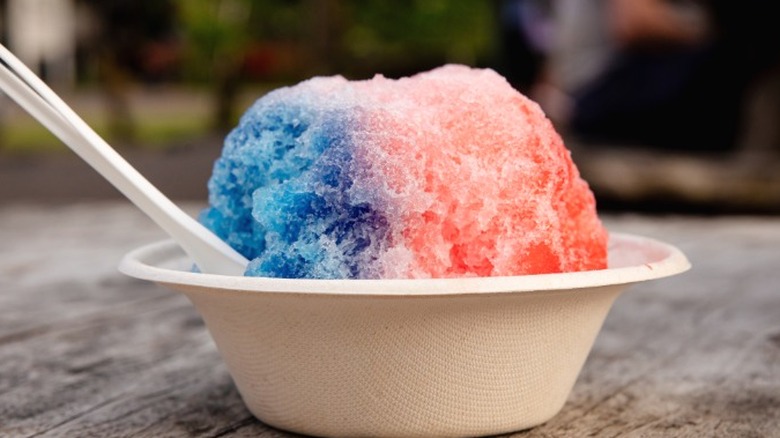Take A Cold Dive Into The History Of Hawaiian Shave Ice
Call it a snow cone, call it piragua, call it granita — cultures all around the world partake in the joys of syrup over shaved ice, and Hawaii is certainly no exception. But although it's part of the United States — snow cone country, in other words, the same kind of snow cone that ushered in the dubious flavor of blue raspberry — Hawaii has a tradition of its own, Hawaiian shave ice, which is rooted in an ancient Japanese dessert called kakigōri.
Kakigōri originated in the Heian period somewhere between the seventh and ninth centuries, consisting (much as similar desserts do nowadays) of sweet syrup mixed with shaved or crushed ice. It was originally a luxurious dessert, as only the very wealthy could maintain large quantities of ice over the year. By the early 20th century, however, refrigeration and ice-making technology had advanced to the point where people of all social strata could enjoy a cold treat — even Japanese laborers working grueling hours on sugar plantations in Hawaii. As Japanese-Hawaiian immigrants assimilated and started their own businesses, some decided to sell the sweet dessert from their homeland, and shave ice was born.
Hawaiian shave ice is different from snow cones
Hawaiian shave ice (not "shaved ice", mind you — the name comes from Hawaiian pidgin) may not be too far removed from a snow cone, but the difference lies in the consistency of the ice. Snow cones are usually made of crushed ice, which gives them that familiar crunchy, packed-snow texture you remember from the county fair. That's certainly pleasant in its own way, but Hawaiian shave ice, by staying true to its name, arguably outdoes it. By shaving the ice into tiny flakes, the dessert takes on a light, fluffy texture that practically vanishes the second it hits your tongue, leaving only an explosion of flavor behind.
Even if you've never set foot in Hawaii, you may have had something very close to Hawaiian shave ice. Kona Ice, a popular franchise of shaved ice trucks, clearly takes a great deal of inspiration from the Hawaiian dessert, shaving its ice thin and theming itself around the islands. That said, it's not quite the real deal. The "History of Shaved Ice" section on the Kona website tells a fictional origin story of a Hawaiian woman named Kaia shaving ice off the top of Mauna Holo, neglecting to mention the history of kakigōri or Japanese plantation workers in Hawaii. (Kona Ice, incidentally, was founded in northern Kentucky.)

